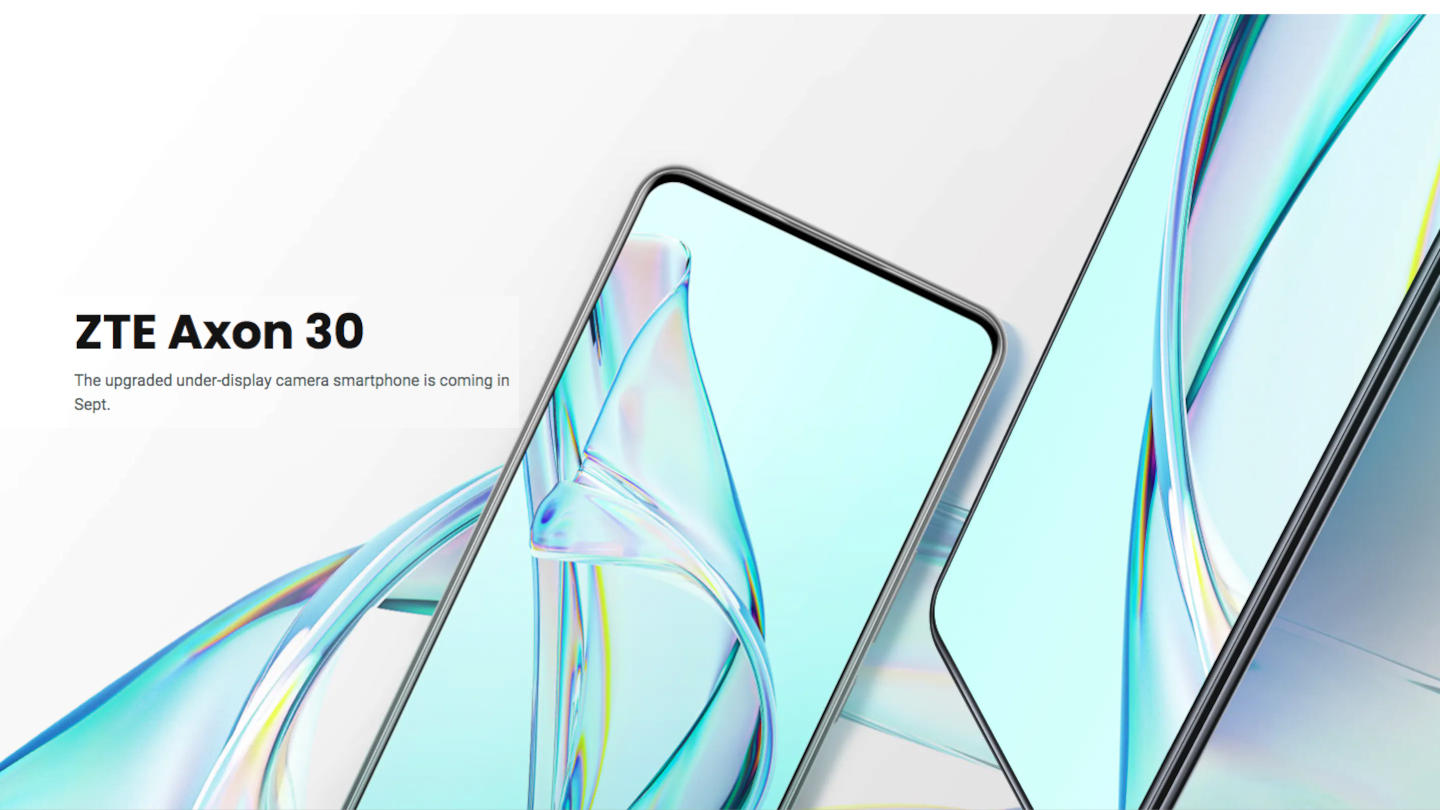[Image: GSMArena] The ZTE Axon 30 Ultra 5G is an excellent device with an awesome display, a great host of cameras, great zoom photography ability, and a very fast battery charging time. The software yet lacks some refining.
The ZTE Axon 30 Ultra 5G retails for $749 / £649 (around AU$965) for the 8GB RAM and 128GB storage configuration, and up to $849 USD, £739 GBP (around AU$1,095) for the 12GB RAM and 256GB configuration. That’s more than the ZTE Axon 30 Pro 5G, which reportedly retailed for €400 (around $485 / £345 / AU$630). The ZTE Axon 30 Ultra 5G comes in regular black and white hues, as well as a light blue and light brown.

The ZTE Axon 30 Ultra 5G looks plenty sleek, despite its huge camera slab. That’s its most defining feature, though the device has more refined methods that make it look even more superior than other flagship phones.
For instance, the Axon 30 Ultra’s front glass has waterfall curves, which isn’t too uncommon in high-end phones – but much rarer, the Axon 30 Ultra’s rear glass is curved too.
The curved glass on the front and back means the chromed metal sides between them are very thin. It looks premium but is too minimal to get a good grip on. Thus it’s awkward, and even a bit unpleasant, to hold one-handed. The buttons – a textured lock button and a volume button rocker – are necessarily thin to fit in these sides.
Those thin sides curve seamlessly into the top and bottom, which are attractively chromed. The top has a single microphone, while the bottom has a central USB-C port, speaker on the right, and SIM slot on the left. There’s another speaker near the earpiece on the top of the display, and both combined produce a very even (and evenly distributed) sound, which is great for watching media on the go.
The glass back of the phone has a frosted finish, but it’s the camera block that will draw eyes – a massive rectangle on the top left corner. There are three standard circular lenses, a flash, and a LiDar sensor, plus a squared periscope lens on the bottom. This gives the camera block a bit of a hodgepodge look, but the chromatic finish on the surface between the lenses contrasts nicely with the non-reflective frosted glass of the phone’s back cover.

The ZTE Axon 30 Ultra 5G has a 6.67-inch AMOLED display, which is large already but looks even bigger with the waterfall curved sides. The screen’s 20:9 ratio makes the phone feel a bit wider than other flagship phones.
In tests playing 4K video, the Axon 30 Ultra 5G’s display produced a picture with stunning clarity, a true testament to its screen’s rich color palette despite the Full HD resolution maximum. Inside by side tests with other phones playing the same video, the Axon 30 Ultra 5G’s display tended toward a higher-saturated picture, with colors that were noticeably brighter and richer than other phones, though not too much as to feel unrealistic.

The ZTE Axon 30 Ultra 5G is a step backward in terms of its front-facing camera, which is in a punch-hole instead of its predecessor’s under-screen selfie camera – not in terms of capability but just as a display progression. However, its main suite of cameras is impressive – main, ultra-wide, telephoto, and even an intermediate ‘wide’ camera with laser autofocus. As a whole, the system is pretty handy to shoot at various distances, with its 5x optical periscope lens maxing out at an impressive 60x digital zoom.
Practically, that means I could sit in the cheap seats at a baseball stadium a few hundred feet above home plate and read the name on the back of the hitter’s jersey. At the 60x digital zoom maximum, Axon 30 Ultra 5G’s cameras might capture so much smudged color that the picture belongs in the Impressionist section of an art museum, but that meant more conservative zoom levels up to 20x caught good detail, though the clarity washed out closer to 30x.
Otherwise, the phone handled daylight and well-lit environments well, though it struggled with contrasted lighting – for instance, letting dark foregrounds drown out in deep blacks but capturing bright background areas well. That said, the 64MP main camera still captured plenty of detail in bright photos with even lighting.
The photo software processing struggled in some areas but not others. In one instance, a portrait selfie was taken by the 16MP front-facing camera rendering impressive depth but leaving a scattering of bright red dots – which were hats and jerseys featuring the home team’s signature red hue.
At other times, decreasing the zoom level from 60x didn’t actually zoom out the picture until it hit between 30x and 20x, which seemed like a failure to register control inputs.

That said, the actual camera app deserves acclaim, with the most-used settings (timer, resolution ratio, composition grid) tucked away in a sensible drop-down menu. While the English localization isn’t perfect, the interface feels thought out – for example, the multi-camera mode shows small live previews of the various lenses primed to take simultaneous shots inset in the screen’s bottom-right corner, visible but not in the way.
The camera app has the expected assortment of sub-modes for taking different shots like panorama, mono, and macro as well as rarer ones like long exposure and moon for taking shots of our favorite satellite. The camera suite’s rear video capability maxes out at 8K video at 30fps or 4K at 60fps.

The ZTE Axon 30 Ultra 5G packs top-level smartphone specs, starting with its Snapdragon 888 chipset. The phone starts at 8GB of RAM, up to 16GB; on paper, it’s one of the most powerful smartphones you can buy.
In practice, the phone runs smoothly, with no hang-ups or slow down while performing even demanding tasks like watching media or playing intensive games. That leads to a Geekbench 5 score of 3594, a respectable result has given the model we tested had the phone’s minimum configuration of 8GB of RAM and just a bit lower than the comparably-specced OnePlus 9’s score of 3654.
The Axon 30 Ultra 5G has Android 11 out of the box, giving users access to universal dark mode and other current Android features. The MyOS overlay is a bit more noticeable than other Android skins, with more pastel colors and larger, squared-off icons than other phones.
The phone’s software isn’t as refined as that on rival flagship phones. We noticed apps delayed or failing to load every so often: the camera app, for instance, failed to fully open from the Lock Screen several times and just displayed a black screen.
It’s a lack of polish that’s fixable with updates, of course, and blemishes the otherwise appealing software choices. The easily accessible menu options in the aforementioned camera app are an example of intuitive interface design found elsewhere, like in the control center, which has often-used menu options (flashlight, Bluetooth, WiFi) in big buttons on the top. The brightness bar is wide and easy to toggle. It might be too oversized for some users’ preferences, but I found the extra accessibility far more appealing than perhaps a more aesthetically attractive button arrangement.
The Axon 30 Ultra 5G has a 4,600mAh battery, which is comparable to the capacity in other premium phones – like, say, the 4,800mAh battery in the Samsung Galaxy S21 Plus. There is no wireless charging, nor reverse wireless charging, but there are battery-saving modes to eke out more running time.
All that capacity enables the Axon 30 Ultra 5G to last over a day and well into the second on a full charge. Tasks drain the battery at a rate that’s in line with other flagship phones: watching a 30-minute TV episode or playing a 10-minute match of a graphically intense game (in our case, Call of Duty: Mobile) will sap about 3% of the battery’s main capacity. But that doesn’t matter much given how fast you can recharge the phone using the 65W charger included in the box. In one instance, we juiced up the phone from 3% up to 84% in 30 minutes.



